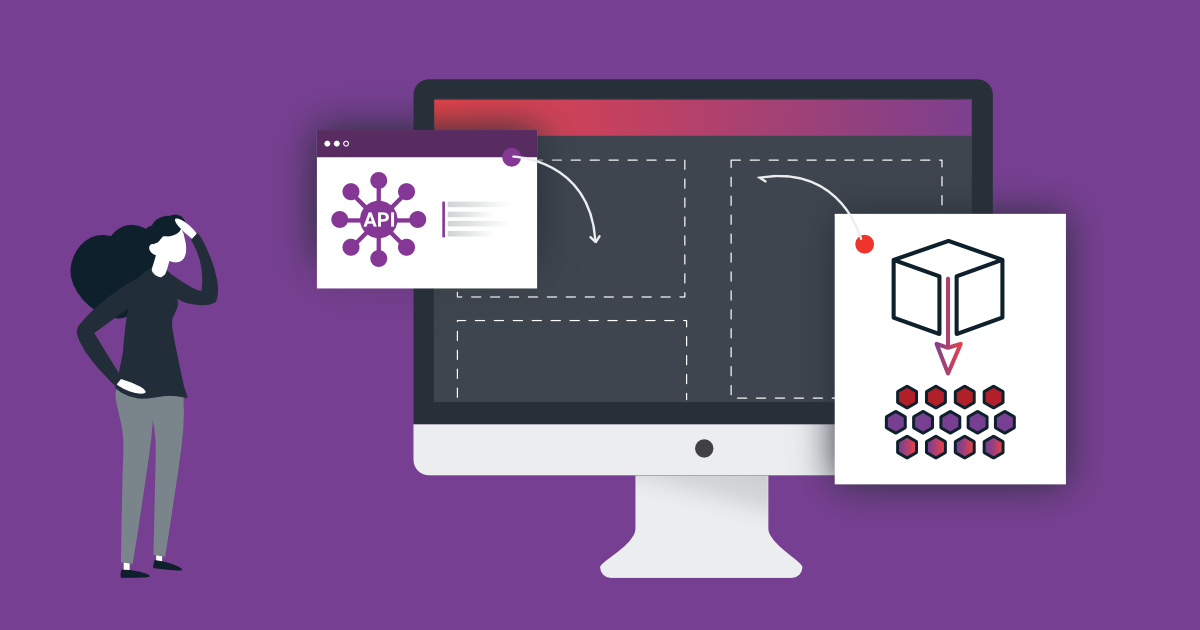API versioning is a crucial aspect of building and maintaining APIs, as it allows developers to introduce changes to their API without breaking existing client applications. In essence, it involves creating different versions of an API that coexist and function independently of each other. This is particularly important as APIs evolve over time and new features are added or old ones are removed.
There are different approaches to API versioning, including URL versioning, header versioning, and media type versioning. Each approach has its own advantages and disadvantages, and choosing the right one depends on the specific use case and the needs of the API's users.
What is URL versioning?
URL versioning is an approach to API versioning where the version number is included in the URL itself. Typically, the version number is appended to the base URL of the API, separated by a forward slash. For example, if the base URL of an API is ‘https://example.com/api’, and the current version is version 1, the URL for a resource might look like this: ‘https://example.com/api/v1/resource’.
Using URL versioning, developers can easily distinguish between different versions of the API and avoid conflicts with existing client applications. It also makes it easy to deploy different versions of the API to different servers or environments, since each version has its own distinct URL.
However, one of the downsides of URL versioning is that it can result in cluttered and difficult-to-read URLs, especially if there are multiple versions of the API. Additionally, changes to the URL structure can break existing client applications, since they rely on the URL to access the API resources. To mitigate this risk, it's important to follow best practices for URL versioning and provide clear documentation and migration paths for users.
What are the advantages and disadvantages of URL versioning?
Advantages:
- Clear and simple way to indicate the API version, making it easy for developers to understand which version they are using.
- Allows for easy versioning of the API as it's simply a matter of adding the version number to the URL.
- Enables easy deployment of different versions of the API to different servers or environments.
- Can be used with any HTTP client library or tool, as it simply involves constructing a different URL.
Disadvantages:
- Can result in long and cluttered URLs, especially if there are multiple versions of the API.
- Changes to the URL structure can break existing client applications, since they rely on the URL to access the API resources.
- Requires more work for the client to switch between API versions, since the client must construct a new URL to access a different version.
- Can cause confusion if the URL is not clearly documented, leading to errors or mistakes.
- Overall, URL versioning can be a good approach to API versioning, but it's important to carefully consider the trade offs and best practices to ensure that it is used effectively.
What are the best practices to consider when using URL versioning for your API?
- Use a consistent URL structure: Use a consistent URL structure for all resources within the API and follow a clear naming convention for versioning. This can make it easier for developers to understand the structure of the API and locate the resources they need.
- Keep the URL clean: Avoid using complex or nested URLs to reduce the complexity of the URLs and make them more readable. This can make it easier for developers to understand and remember the URL structure, and also make it easier to update the URL if needed.
- Document the versioning scheme: Clearly document the versioning scheme and how it works so that developers can understand how to use it. This can help prevent confusion and errors when working with the API.
- Provide migration paths: Provide clear migration paths for developers who are using a previous version of the API so they can easily transition to the new version. This can reduce the risk of breaking changes and help maintain the stability of the API.
- Consider versioning for only major changes: Consider versioning only for major changes that will break compatibility with previous versions, and use other versioning techniques, such as header or media type versioning, for minor changes. This can help reduce the number of API versions that need to be maintained and simplify the API.
By following these best practices, you can effectively use URL versioning to version your API and help ensure that it remains stable and easy to use for developers.
What is Header versioning?
Header versioning is another approach to API versioning, where the version number is included in a request header. In this approach, the version number is not included in the URL, but rather in a custom header, such as ‘Api-Version’, that is sent along with the request. The server then reads the header and determines which version of the API to use for the request.
Using header versioning, developers can make requests to the same URL and have the server respond with the appropriate version of the API. This can help simplify the URLs and make them more readable, while still allowing for versioning. Additionally, it can be easier to manage and modify the versioning scheme since it does not rely on the structure of the URL.
However, header versioning can be more complex to implement, as it requires changes to the client code to include the custom header, and the server code to read the header and route the request accordingly. Additionally, header versioning can be more difficult to cache or handle through proxies, since the version number is not included in the URL.
Here are a couple of examples of how to implement Header versioning:
-
Example using custom header:

In this example, the client is making a request to the ‘/resource’ endpoint, and including a custom header ‘Api-Version: 1’. The server reads the header and responds with the appropriate version of the resource. -
Example using Accept header:

In this example, the client is making a request to the ‘/resource’ endpoint, and including a custom Accept header that specifies the version of the API to use. The server reads the Accept header and responds with the appropriate version of the resource.
In both of these examples, the version number is not included in the URL, but rather in a custom header or Accept header. This allows for versioning without cluttering the URL, while still allowing for easy versioning of the API.
What are the advantages and disadvantages of Header versioning?
Advantages:
- Allows for versioning without cluttering the URL, making it easier to read and remember.
- Enables better separation of concerns, as the version information is kept separate from the resource being requested.
- Provides more flexibility in versioning the API, as it's possible to use different versioning schemes for different resources.
- Easier to add or modify the versioning scheme, as it doesn't require changes to the URL structure.
- Can make it easier to implement and handle caching or handling through proxies, since the version number is not included in the URL.
Disadvantages:
- Requires changes to the client code to include the custom header or Accept header.
- Can be more complex to implement, as it requires changes to the server code to read the header and route the request accordingly.
- Can be more difficult to debug, since the version information is not visible in the URL.
- Can result in increased network traffic, as the header needs to be included with each request.
Overall, Header versioning can be a good approach to API versioning, but it's important to carefully consider the trade offs and best practices to ensure that it is used effectively.
What is Media Type versioning?
Media Type versioning is an approach to API versioning where the version number is included in the media type of the response. This approach uses the ‘Content-Type’ header to indicate the version of the API to be used. For example, the response header might include ‘Content-Type: application/json; version=1’.
In Media Type versioning, the structure of the URL and headers are not changed, and the version number is only included in the response content type. The client then reads the media type and uses the appropriate version of the API to parse the response.
Media Type versioning can be used in conjunction with other approaches to API versioning, such as URL versioning or Header versioning, to provide a more complete versioning strategy.
What are the examples of how to implement Media Type versioning?
- Example using JSON media type:

In this example, the client is making a request to the ‘/resource’ endpoint, and including a custom Accept header that specifies the media type and version of the API to use. The server reads the Accept header and responds with the appropriate version of the resource. - Example using XML media type:

In this example, the client is making a request to the ‘/resource’ endpoint, and including a custom Accept header that specifies the media type and version of the API to use. The server reads the Accept header and responds with the appropriate version of the resource.
In both of these examples, the version number is included as a parameter in the media type specified in the Accept header. This allows for versioning without cluttering the URL or headers, while still allowing for easy versioning of the API.
What are the advantages and disadvantages of Media Type versioning?
Advantages:
- Allows for versioning without cluttering the URL or headers, making it easier to read and remember.
- Separates the version information from the resource being requested, providing better separation of concerns.
- Provides more flexibility in versioning the API, as it's possible to use different versioning schemes for different resources.
- Can make it easier to implement and handle caching or handling through proxies, since the version number is not included in the URL or headers.
- Can provide backward compatibility by allowing clients to use older versions of the API as long as the media type is still supported.
Disadvantages:
- Requires changes to the client code to include the version information in the Accept header.
- Can be more complex to implement, as it requires changes to the server code to read the media type and route the request accordingly.
- Can be more difficult to debug, since the version information is not visible in the URL or headers.
- Can result in increased network traffic, as the media type needs to be included with each request.
Overall, Media Type versioning can be a good approach to API versioning, but it's important to carefully consider the trade offs and best practices to ensure that it is used effectively.
What are the best practices for using Media Type versioning?
- Follow a consistent versioning scheme: Choose a versioning scheme that is consistent and easy to understand. This could be a simple sequential numbering system or a date-based system, for example.
- Use media types that are well-defined and widely adopted: Choose well-defined and widely adopted media types, such as ‘application/json’ or ‘application/xml’, to ensure that clients can easily parse the response.
- Document the versioning strategy: Make sure to document the versioning strategy used, including how to include the version number in the media type, to ensure that clients can easily understand how to use the API.
- Use the ‘Accept’ header to specify the version: Clients should use the ‘Accept’ header to specify the version of the API they want to use. This ensures that the version information is separated from the resource being requested.
- Use a default version: Consider using a default version of the API, to allow clients to easily consume the API without having to specify a version.
- Support backward compatibility: Ensure that your API supports backward compatibility by allowing clients to use older versions of the API as long as the media type is still supported.
- Use version negotiation: Consider using version negotiation, where the server can choose the appropriate version of the API based on the ‘Accept’ header, if a specific version is not specified.
By following these best practices, you can effectively use Media Type versioning in your API to provide a flexible and easy-to-use versioning strategy for your clients.
Which API versioning approach is best for different use cases?
-
URL versioning:
- Best for small APIs with a limited number of resources and low traffic volume.
- Suitable for simple use cases where backward compatibility is not a concern.
- Useful for quick experimentation and prototyping. -
Header versioning:
- Best for large APIs with many resources and high traffic volume.
- Suitable for complex use cases where backward compatibility is important.
- Useful for APIs that require fine-grained versioning control, where different versions of a resource may have different headers. -
Media Type versioning:
- Best for APIs that have complex resources with multiple representations.
- Suitable for APIs that require versioning at the representation level, rather than at the resource level.
- Useful for APIs that require multiple representations of the same resource, such as APIs that support both XML and JSON.
The best approach to API versioning will depend on the specific needs and requirements of your API. It's important to carefully consider the trade offs and best practices of each approach before deciding on a versioning strategy. In many cases, a combination of different approaches may be the best solution, allowing you to take advantage of the strengths of each approach.
Choosing the right API versioning strategy
API versioning is an important consideration for any API that is expected to evolve over time. There are three main approaches to API versioning: URL versioning, header versioning, and media type versioning.
URL versioning is the simplest approach, but it can clutter the URL and can be difficult to implement backward compatibility. Header versioning separates the version information from the resource being requested, providing better separation of concerns, but it requires changes to the client and server code and can be more difficult to debug. Media type versioning separates the version information from the resource being requested and provides more flexibility in versioning the API, but it can be more complex to implement and can be more difficult to debug.
The best approach to API versioning will depend on the specific needs and requirements of your API.





